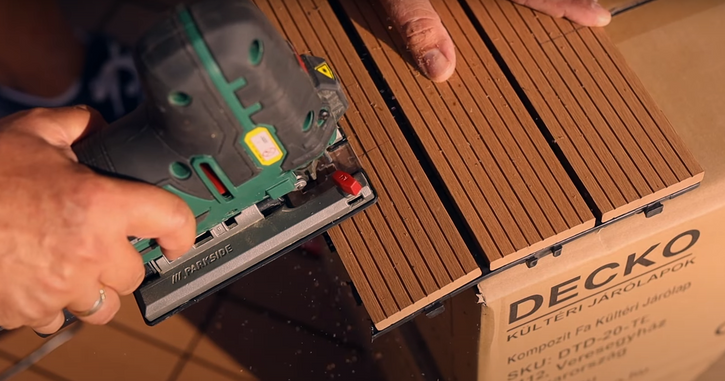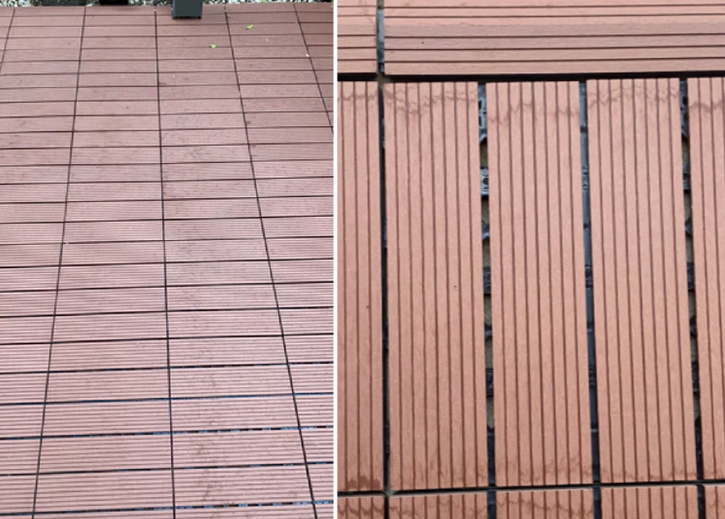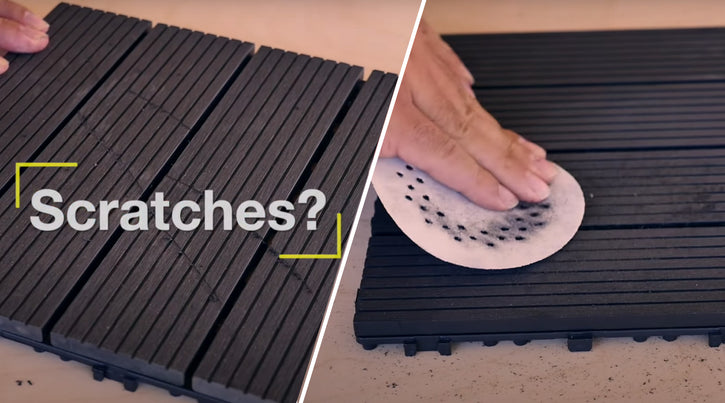There is a reason we are the Number 1 in DECK Tiles in New Zealand! Follow this guide for professional results.
💥Free Pickup from Auckland
💥 or Free Pickup
Everything you need to know about installation, care, and maintenance
There is a reason we are the Number 1 in DECK Tiles in New Zealand! Follow this guide for professional results.
Step-by-step instructions for proper installation

Always start from the most visible edge and work towards hidden areas for the best professional appearance.

Use any wood-cutting saw to trim tiles while maintaining their structural integrity.
Always wear safety equipment when cutting. Make precise cuts for professional appearance.

Ramp edges are optional but recommended for areas ending on walkways or frequently used spaces. Consider the width of 80mm to add or discount from your measurements.

This short video demonstrates how to use the tiles vertically as a fascia or stair.
Use dilation gaps in areas between two walls or large, long spaces to allow tiles to expand and prevent warping or damage from thermal expansion. Contact us for personalised specific information.
Do not install tiles in areas without proper drainage, as prolonged exposure to pooling water can lead to damage. Ensure the installation site allows water to drain effectively, preventing stagnant water and allowing the tiles to dry periodically.
Keep your product looking great for years to come




Painting, Sealing and Staining: We strongly recommend against applying a 3rd party coating to DECKO products. However, if you do decide for some reason to apply an external coating it should be done when the deck is fully cleaned and dried. Be aware that if you do apply an external coating, your warranty will be voided.
Safety First - Handling & Care of DECKO Tiles: Our 12.5 kg carton boxes contain up to 11 tiles and it is safe to handle and transport in this way. The carton boxes are manufactured in an eco-friendly way from recycled paper. Please recycle the boxes by disposing of them at your local cardboard recyclers or placing them in the recycling bin.
Installation Safety: When tiles are stacked on top of each other during install they can slip, so do not walk on stacked, piled or loose tiles. Please store DECKO tiles in the box in a dry area until installation to keep the integrity of the boxes for handling, even though the product inside is waterproof.
Skin Contact: If skin or hair comes in contact with dust from the product, wash with soap and water.
Eye Contact: If dust enters the eyes, wash out immediately with water. In all cases of eye contamination, it is a sensible precaution to seek medical advice.
Installation Liability: These guidelines are for demonstration purposes only, and DECKO is not responsible for any issues arising from improper installation. It is the customer's responsibility to follow the instructions carefully and ensure a safe installation. Failure to adhere to these guidelines may void the product warranty.
There is a reason we are the Number 1 in DECK Tiles in New Zealand! Order a Sample and find out why!
